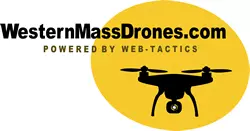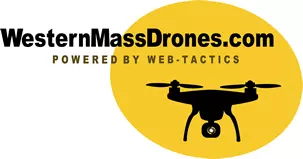A Comprehensive Checklist for New Drone Owners
However, before you launch into drone photography, it's crucial to understand the essentials of drone operation to ensure safety, compliance with regulations, and the best possible outcomes for your projects. This comprehensive checklist guides new drone owners through the key considerations and preparations needed before embarking on their drone photography adventures.
Watch the Video!
Understanding Drone Regulations
Federal Regulations (FAA Guidelines in the U.S.)
Before you take your drone out for its maiden flight, familiarize yourself with the Federal Aviation Administration (FAA) regulations. These rules are in place to ensure the safety of the national airspace and the general public. Some of the essential FAA requirements include:
-
Registration: All drones weighing over 0.55 pounds (250 grams) must be registered with the FAA. You can complete this process online and receive a registration number that must be displayed on your drone.
-
Certification: If you plan to use your drone for commercial purposes, you must obtain a Remote Pilot Certificate by passing the FAA's Part 107 test.
-
Operating Rules include flying below 400 feet, maintaining a line of sight with the drone, and avoiding flights over people and moving vehicles.
State and Local Regulations
In addition to federal rules, each state and local jurisdiction may have specific drone use regulations. These can vary widely, so it's essential to check the laws in your area before flying. Some common state and local restrictions include:
-
No-Fly Zones: Airports, military bases, and national parks often have strict no-fly rules.
-
Privacy Laws: Many states have laws protecting individual privacy that may affect where and how you can fly your drone.
Importance of Registering Your Drone
Registering your drone ensures compliance with federal regulations and helps recover it if it gets lost. The registration process is straightforward and provides a sense of accountability and responsibility for drone operators.
Resources for Staying Updated on Regulations
Regulations can change, so staying informed about the latest rules is essential. Helpful resources include the FAA website, local government websites, and dedicated drone communities and forums. Mobile apps like B4UFLY, provided by the FAA, can also help you check airspace restrictions in real-time.
Getting to Know Your Drone
Reading the User Manual Thoroughly
Every drone has a user manual detailing its specific features, controls, and maintenance requirements. Reading the manual thoroughly is essential for understanding how to operate your drone correctly and safely. It will guide you through setup, calibration, and troubleshooting steps, ensuring you're well-prepared before your first flight.
Familiarizing Yourself with Drone Controls and Features
Spend time learning about your drone's controls and features. This includes understanding how to operate the remote controller, navigating the drone's app interface, and knowing the functions of various buttons and switches. Practice using these controls in a safe, open area before attempting complex manoeuvres or shooting in more challenging environments.
Importance of Firmware Updates
Manufacturers regularly update firmware to enhance drone performance, add new features, and fix bugs. Keeping your drone's firmware up to date is crucial for optimal functionality and safety. Always check for updates before a flight and ensure your drone runs the latest version.
Conducting Pre-Flight Checks
Performing pre-flight checks is a vital part of drone operation. These checks help identify potential issues that could lead to accidents or malfunctions. Critical pre-flight checks include:
-
Inspecting the drone for any physical damage
-
Ensuring propellers are securely attached and in good condition
-
Verifying the battery level and status
-
Confirming that GPS and compass systems are calibrated
Safety Precautions
Choosing Safe Flying Locations
It is paramount to select a safe location for your drone. Avoid crowded areas, restricted airspaces, and places with potential hazards. Ideal flying locations include open fields, parks (where permitted), and designated drone zones.
Avoiding Restricted Airspace
Always be aware of restricted airspaces like airports, military bases, and certain government buildings. Flying in these areas is illegal and can result in severe penalties. Use apps like B4UFLY to check for airspace restrictions before your flight.
Keeping Away from People and Property
Maintain a safe distance from people, animals, and property to avoid accidents. Never fly directly over crowds or private property without permission. This helps ensure the safety of others and protects you from potential legal issues.
Weather Considerations
Weather conditions significantly impact drone flight. Avoid flying in strong winds, rain, snow, or fog. These conditions can make controlling your drone difficult and increase the risk of crashes. Always check the weather forecast before heading out and choose calm, clear days for flying.
Maintaining Line of Sight with the Drone
Keeping your drone within your line of sight is an essential safety rule that helps you maintain control and quickly respond to any issues. Avoid flying behind obstacles like buildings or trees, blocking your view and disrupting the signal.
Pre-Flight Checklist
Checking Battery Levels and Charging
Ensure your drone's battery is fully charged before each flight. Low battery levels can lead to unexpected landings and crashes. Carry spare batteries and a portable charger if you plan to fly for extended periods.
Ensuring All Components Are Secure
Inspect your drone to ensure all components, including propellers and landing gear, are securely attached. Loose parts can cause instability and accidents during flight.
Calibrating the Drone's Compass and GPS
Calibration is crucial for accurate navigation and stability. Follow the manufacturer's instructions to calibrate the compass and GPS before each flight, especially if you're flying in a new location.
Testing the Camera and Gimbal Settings
Before takeoff, test the camera and gimbal to ensure they function correctly. Adjust settings such as resolution, frame rate, and stabilization according to your shooting needs.
Essential Equipment and Accessories
Spare Batteries and Chargers
Having extra batteries and chargers is essential for uninterrupted flying sessions. Drones can have limited flight times, so spare batteries allow you to extend your shooting duration.
Propeller Guards
Propeller guards protect your drone's propellers from damage during minor collisions and enhance safety, especially when flying in confined spaces or near obstacles.
Landing Pad
A landing pad provides a clean, flat surface for takeoff and landing, protecting your drone's camera and sensors from dust, dirt, and uneven ground.
Carrying Case
A sturdy carrying case helps transport your drone and accessories safely. It protects your equipment from damage and keeps everything organized, making it easier to carry your gear to various locations.
Flight Planning and Execution
Planning Your Flight Path
Before each flight, plan your route and shooting locations. Consider the best angles and lighting conditions for your shots. Pre-planning helps maximize your flight time and ensures you capture the desired footage efficiently.
Setting Return-to-Home (RTH) Features
Most drones have a return-to-home (RTH) feature that automatically brings the drone back to its takeoff point in case of low battery or signal loss. Set the RTH altitude high enough to avoid obstacles and accurately record the home point before takeoff.
Monitoring Flight Time and Battery Usage
Keep an eye on your drone's flight time and battery levels during the flight. Set alerts to notify you when the battery is low, giving you ample time to return and land safely.
Understanding No-Fly Zones and Temporary Flight Restrictions (TFRs)
Stay informed about no-fly zones and temporary flight restrictions (TFRs) that may affect your flight plans. Use apps and online resources to check for any restrictions in your planned flight area. Flying in restricted zones can result in fines and other penalties.
Ethical Considerations
Respecting Privacy
Be mindful of privacy when flying your drone. Avoid capturing images or videos of people without their consent and respect private property boundaries. Flying responsibly builds trust and ensures the drone community's reputation remains positive.
Avoiding Wildlife Disturbance
Drones can disturb wildlife, causing stress and harm to animals. Avoid flying near nesting sites, protected areas, and wildlife habitats. Observing from a distance helps protect the natural environment and its inhabitants.
Flying Responsibly and Respecting Others
Operate your drone in a manner that respects the safety and enjoyment of others. Avoid flying in a way that could annoy or endanger people. Following these guidelines fosters a positive relationship between drone operators and the public.
Post-Flight Procedures
Safely Landing the Drone
Always land your drone slowly and carefully. Choose a flat, open area for landing to avoid obstacles and potential damage. Once landed power off the drone and remote controller.
Reviewing Flight Logs and Data
Many drones record flight logs and data that you can review post-flight. Analyzing this information helps you understand your drone's performance, identify issues, and improve future flights.
Performing Post-Flight Inspections
Inspect your drone for any signs of wear or damage after each flight. Check the propellers, battery, and other components for issues that need addressing. Regular maintenance ensures your drone remains in good condition.
Storing the Drone Properly
Store your drone in a cool, dry place away from direct sunlight and extreme temperatures. Use a carrying case to protect it from dust and physical damage. Proper storage prolongs the life of your drone and keeps it ready for your next flight.
Conclusion
Embarking on drone photography projects can be incredibly rewarding but requires careful preparation and adherence to safety guidelines. By following this comprehensive checklist, new drone owners can ensure they operate their drones safely, responsibly, and effectively. Remember, continuous learning and practice are essential for mastering the art of drone photography. Stay informed, fly safely, and enjoy capturing the world from a new perspective.

